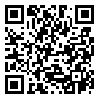قابل توجه نویسندگان محترم، مقالاتی که از تاریخ 1404/07/13 برای نشریه ارسال می شوند، شامل پرداخت هزینه بررسی نخواهند شد.
Volume 7, Issue 1 (Semi-Annual 2023)
JIC 2023, 7(1): 89-99 |
Back to browse issues page
Download citation:
BibTeX | RIS | EndNote | Medlars | ProCite | Reference Manager | RefWorks
Send citation to:



BibTeX | RIS | EndNote | Medlars | ProCite | Reference Manager | RefWorks
Send citation to:
Saravani F, Dadvar A. (2023). Reasons of Formation of the Illustrated Manuscript during the era of Akbar Shah, Looking at the version of Dārāb-nama. JIC. 7(1), 89-99. doi:10.52547/jic.7.1.89
URL: http://jih-tabriziau.ir/article-1-268-en.html
URL: http://jih-tabriziau.ir/article-1-268-en.html
1- PhD in Art Research, Faculty of Arts, Al-Zahra University, Tehran, Iran.
2- Professor, Department of Art Research, Faculty of Art, Al-Zahra University, Tehran, Iran. ,gdadvar6@gmail.com
2- Professor, Department of Art Research, Faculty of Art, Al-Zahra University, Tehran, Iran. ,
Abstract: (2975 Views)
Painting has a deep connection to literature. The branches of painting can be named; Painting by the Gurkanian school of India which with the support of the Mongol kings and under the supervision of Persian masters. After the Safavid court gave up its extensive support for art, the painting school of Tabriz declined and some artists of the Safavid court migrated to India at the invitation of the Gurkani rulers. The presence of these artists and their supervision of Gurkani's book design workshops caused many aesthetic achievements of painting to be transferred to the new school of Gurkani. produced Persian illustrated books.one of these works is Dārāb-nama; It is a narrative and epic work by Abu Tahir Tarsusi which has not been illustrated before in any of the Iranian schools. the present article, in a descriptive-analytical manner, answers the question: what were the reasons and how this illustrated book was formed? And how did the way of managing the painting studio and the taste of the king affect the works? The results of the research show that Akbar Shah was interested in narrative and illustrated books due to a disease that made it difficult for him to read and for this reason, the largest number of illustrated books in the Gurkani school, among other kings of this dynasty, belongs to his time But due to the large number of works of Akbar's court, and despite the participation of artists such as Basawan, the first painter of the court, Dārāb-nama's drawings are still weak and the lack of coordination between the images sometimes makes it difficult to tell if the drawings belong to a book. In general, the artistic policies and the conditions of Akbar Shah's painting studio caused the artists to constantly change their work methods in terms of subject matter and style and did not reach a coherence and harmony, at least during his time. Although Dārāb-nama paintings are not very compatible with each other and it is not possible to distinguish whether all these works are from the same collection or multiple collections, but they can be qualitatively divided into two categories, medium and weak, and as before It was pointed out that this inconsistency in the quality of the works is due to the lack of single supervision and the presence of all the factors involved in the work in one workshop.
What Humayun intended to start at the beginning of his arrival was to transfer Iranian painting to his court, but the short life of his reign in India caused Akbar Shah to establish the "Mughal-India" school according to his personal views and the policies of his court. that native Indian painters should also be involved in the process of its formation, because Akbar Shah wanted this style to be rooted in the soil of India and spread and continue. Although many Indian painters were trained under the supervision of Iranian masters, the introduction of Indian elements into this style of painting was inevitable and approved and supported by Akbar Shah. The "Indian and Iranian" style of painting, which was founded by Humayun, gradually changed its nature to the school of "Indian Mongols" and turned into a style that can no longer be called imitation.
What Humayun intended to start at the beginning of his arrival was to transfer Iranian painting to his court, but the short life of his reign in India caused Akbar Shah to establish the "Mughal-India" school according to his personal views and the policies of his court. that native Indian painters should also be involved in the process of its formation, because Akbar Shah wanted this style to be rooted in the soil of India and spread and continue. Although many Indian painters were trained under the supervision of Iranian masters, the introduction of Indian elements into this style of painting was inevitable and approved and supported by Akbar Shah. The "Indian and Iranian" style of painting, which was founded by Humayun, gradually changed its nature to the school of "Indian Mongols" and turned into a style that can no longer be called imitation.
Type of Study: Original Research |
Subject:
2
Received: 2023/05/17 | Accepted: 2023/09/18 | Published: 2023/12/20
Received: 2023/05/17 | Accepted: 2023/09/18 | Published: 2023/12/20
Send email to the article author
| Rights and permissions | |
 |
This work is licensed under a Creative Commons Attribution-NonCommercial 4.0 International License. |







 tabriziau.ac.ir
tabriziau.ac.ir